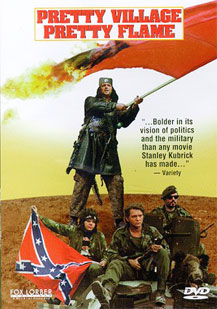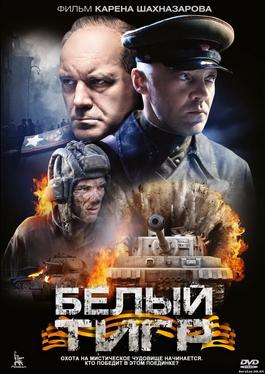
I finally got to see one of my great white
whales. “Alatriste” (also known as
“Alatriste: The Spanish Musketeer”) is a
Spanish film based on the literary character Captain Diego Alatriste. He is the main character in an ongoing series
of novels by Arturo Perez-Reverte. the
author began the series after being appalled that his daughter’s history
textbook had very little about Spain during its Golden Age of the 16th
and 17th Century. That is
surprising since that period was the last time Spain was a consequential
power. I would have thought those
centuries would have gotten a lot of coverage and the textbook would have ended
with them. Perez-Reverte decided not to
go with the other obvious choice – a conquistador. Instead, Alatriste is a musketeer fighting in
the Dutch War of Independence (or the Eighty Years’ War, as the movie calls
it). The movie was directed by Agustin
Diaz Yanes. Yanes and Perez-Reverte
co-wrote the screenplay and they must have been told there would be no sequel
because they included incidents from the first five novels in the series and
foreshadowed events from future novels.
The movie was the second most expensive movie in Spanish cinema
history. It underperformed at the box
office.
“Alatriste” is set in the 17th
Century. Spain is powerful. King Philip IV rules a large empire that is
supposed to include the Netherlands, Belgium, and Luxembourg. The Dutch have been in revolt since
1568. Diego Alatriste is a Spanish
soldier fighting in Flanders in 1622. He
and his men are wading in a river with their muskets over their heads. Diego blows on his match occasionally to keep
it glowing. They are conducting a
camisado which is a tactic involving a night attack on a hopefully sleepy enemy
position. In this case, they are
attacking a fort to spike the cannons. The ensuing melee is intense with stabbings
and musket fire. It’s a great
opening. Very atmospheric. Who are these guys? What are they fighting about? It turns out that Diego is a
mercenary/assassin/soldier. And an
adventurer and ladies’ man. And he wears
the coolest hat in war movie history.
“Alatriste” follows several arcs. Diego is a father-figure for young
Inigo. Their relationship evolves into
that of comrades-in-arms. Diego has a
romantic relationship with an actress named Maria. It’s a roller coaster ride. Inigo has his own romance with a femme fatale
named Angelica. And there is something
going on between Diego and a man in black.
Malatesta is a Sicilian hit man (like every other Sicilian male in
cinema). He and Diego remind of Tuco and
Blondie in “The Good, the Bad, and the Ugly”.
Another arc gets Diego entangled in political machinations. The Inquisition makes an appearance. Diego and Malatesta are sent to assassinate
the Prince of Wales and the Duke of Buckingham.
Diego is sometimes a pawn, but he’s a dashing hero. Actually, he’s an anti-hero, but with a
conscience.
The movie is episodic. As the arcs play out, we get set pieces like
the siege of Breda and the Battle of Rocroi.
There is also an intense scene involving robbing gold from a ship. The action is graphic. The movie has more stabbing than a slasher
film. Breda and Rocroi are rare movie
coverage of the Thirty Years’ War. At
Breda, Diego endures the rain and mud in the trenches (they had them back then!). And snipers!
He and his men are sent into a tunnel that reminds of “The Great Escape”
without the rollers. You don’t see
medieval-style mining much. The movie
finishes strong with Rocroi. We get to
see the Spanish tercio (similar to a Greek phalanx) in action. Pikemen and musketeers, plus a dose of
cavalry. Diego and Inigo use swords, of
course.
“Alatriste” is an epic. It even has the Hans Zimmer type music. The sets are grand and two scenes are staged
to resemble Velasquez paintings. Nice
touch! Velasquez is mentioned in the
movie. And one of the characters is the
poet Francisco de Quevedo. This cat
deserves a biopic of his own. Look him
up. Alatriste deserved his, too. And Viggo Mortensen was perfectly cast as
him. He is outstanding as the war and
political weary protagonist. The rest of
the cast is average and the facial hair will make you wish they had hired the
make-up artist from “Gettysburg”. In
fact, a little more facial hair variety might have helped in identifying the
characters. The ones that I could
identify by face were well-developed.
Malatesta, for instance, is intriguing.
It was hard to tell whether I was supposed to hiss every time he hit the
screen. The two lead females are not
prim.
“Alatriste” is slow moving at times and the action
scenes are high quality, but low quantity.
The movie tries to cover too much ground. At one point it jumps ten years. Overall, Diego goes from a swashbuckling
lothario to a grizzled geezer. His hat
wears better than he does. You’d age too
if you had to deal with the Inquisition and regular Spanish politics. Those politics involve dueling,
naturally. The sword play is realistic,
not showy. Hell, Diego even loses
one. The wounds and deaths are appropriately
gritty. The two battle scenes give the
history fan a taste of what 17th Century warfare must have been
like. Where else are you going to see a
rendition of the Battle of Rocroi? That
battle is recognized as one of the most important in history. It marked the end of the dominance of the
Spanish tercio and coincidentally the greatness of Spain. While not a particularly accurate depiction,
kudos for bringing it to the silver screen.
The closest equivalent to “Alatriste” is “Barry
Lyndon”. Both are epics that mix sexual
and political antics with a war scenario.
“Alatriste” is much better entertainment. Both are too long, but it has some dynamic action
scenes along with a more appealing main character. Plus, Alatriste would kick Lyndon’s ass any day
of the week.
GRADE = B+
BATTLE OF ROCROI




